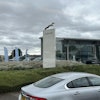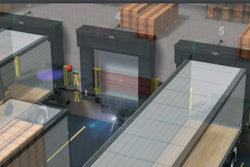Class-D amplifiers, which are used in devices such as smartphones and audio equipment, have the advantages of being compact and highly efficient, but crucially require countermeasures against noise generated by their high-speed switching. TDK has an extensive lineup of products which can provide effective noise countermeasures while ensuring high sound quality and without affecting signals. This article describes the applications and effectiveness of these products in speaker lines for various devices which use Class-D amplifiers.
Table of contents
Class-D amplifiers are used in devices such as AI speakers
Overview of noise countermeasures for speaker lines
Product effectiveness in individual applications
Guide to application in speaker lines for Class-D amplifiers
Class-D amplifiers are used in devices such as AI speakers
Class-D amplifiers, whose features include compact size and high efficiency, are employed in audio amplifiers for speakers in devices which require extended periods of battery-driven operation as well as small sizes, such as smartphones and AI speakers.
A basic block diagram for an AI speaker is shown in Figure 1.
Figure 1: Basic block diagram for AI speaker (smart speaker)
Figure 1: Basic block diagram for AI speaker (smart speaker)
In audio devices which require high sound quality, the properties of noise suppression filters which are inserted in their speaker lines are extremely important. The speaker sound quality is also affected by the properties of inductors used in LPFs (low pass filters) at the output stages of Class-D amplifiers.
This article focuses on describing noise countermeasures in speaker lines for Class-D amplifiers which are used in devices such as smartphones, AI speakers, tablet PCs, and various types of audio equipment.
Overview of noise countermeasures for speaker lines
TDK offers a lineup of filters ideal for suppressing noise in speaker lines, which include the MAF series (multilayer type) and the VAF series (wire wound type) of noise suppression filters. As inductors for LPFs, the VLS-AF series, which uses high-performance ferrite materials, is recommended.
Chip varistors are often used as measures against ESD (electrostatic discharge) in speaker lines. Chip varistors have the characteristic of absorbing abnormal voltages such as ESD and surges, while also being effective at noise suppression since they normally function as capacitors. This provides the advantage of a single component which is able to function as a countermeasure against both ESD and noise.
Since these products are suitable for use in speaker lines for Class-D amplifiers, they can effectively ensure high sound quality, suppress radiation noise, and provide ESD countermeasures. Their basic application methods to achieve these functions are summarized below.
Applicable devices: smartphones, etc. (speaker output: 100mW to 2W class)
In speaker lines for smartphones and other devices whose speaker output is relatively small, Class-D amplifiers without LPFs are most commonly used, and insertion of MAF noise suppression filter can effectively suppress noise (Figure 2).
Figure 2: Countermeasures using MAF noise suppression filters
Figure 2: Countermeasures using MAF noise suppression filters
Applicable devices: AI speakers, tablet PCs, audio equipment, etc. (speaker output: 2W to 20W class)
For devices with speaker output in the 2W to 20W class, such as AI speakers, tablet PCs, and audio equipment, it will be necessary to provide inductors for LPFs externally. The VLS-AF series of inductors for LPFs also has the ability to effectively suppress radiation noise (Figure 3).
Figure 3: Countermeasures using VLS-AF inductors for LPFs
Figure 3: Countermeasures using VLS-AF inductors for LPFs
The use of VAF noise suppression filters together with VLS-AF inductors for LPFs can enhance their effectiveness even further (Figure 4).
Figure 4: Countermeasures using VLS-AF inductors for LPFs and VAF noise suppression filters together
Figure 4: Countermeasures using VLS-AF inductors for LPFs and VAF noise suppression filters together
Product effectiveness in individual applications
The effectiveness of these products in individual applications is specifically described below.
Effectiveness of MAF series noise suppression filters in speaker lines with 100mW to 2W class output
Effectiveness of VLS-AF series inductors for LPFs in speaker lines with 2W to 20W class output
Effectiveness of VAF series noise suppression filters in speaker lines with 2W to 20W class output
Effectiveness of combinations of VLS-AF, VAF, and AVR chip varistors in speaker lines with 2W to 20W class output
Guide to application in speaker lines for Class-D amplifiers
A guide to the application of the VLS-AF series of inductors for LPFs, and the MAF and VAF series of noise suppression filters, regarding their use in speaker lines for Class-D amplifiers, is shown in Figure 12. These products should be selected and used according to speaker output and application.
Figure 12: Guide to application of recommended products for use in speaker lines for Class-D amplifiers (VLS-AF series, MAF/VAF series)
Guide to Application: VLS6045AF Series of Inductors for LPFs
Guide to Application: VLS6045AF Series of Inductors for LPFs
Guide to Application: MAF/VAF Series of Noise Suppression Filters
Guide to Application: MAF/VAF Series of Noise Suppression Filters
[Related Page] Noise Suppression Filters Selection Guide
A guide to the application of the AVR series of chip varistors, which are effective as countermeasures against ESD and noise in microphones, headphones, and speakers, is shown in Figure 13.
Figure 13: Guide to application of recommended chip varistor products for use in microphones, headphones, and speaker lines
Guide to Application: AVR Series of Chip Varistors
Figure 13: Guide to application of recommended chip varistor products for use in microphones, headphones, and speaker lines
[Related Page] Voltage Protection Devices Product Map
[Related Page] ESD Protection Devices Selection Guide
[Related Page] Audio Line Solution for Smartphones Using Chip Varistors
Recommended Products for Use with Class-D Amplifiers (Noise Suppression Filters, Inductors for LPFs, Chip Varistors)
Class-D amplifiers, which are used in devices such as smartphones and audio equipment, have the advantages of being compact and highly efficient, but crucially require countermeasures against noise generated by their high-speed switching. TDK has an extensive lineup of products which can provide effective noise countermeasures while ensuring high sound quality and without affecting signals. This article describes the applications and effectiveness of these products in speaker lines for various devices which use Class-D amplifiers.
May 31, 2018
Latest in Home
Neenah Foundry Turning Manufacturing Site Into Distribution Center
September 11, 2025
Labor Department Watchdog to Audit BLS Jobs, Inflation Reports
September 11, 2025




















